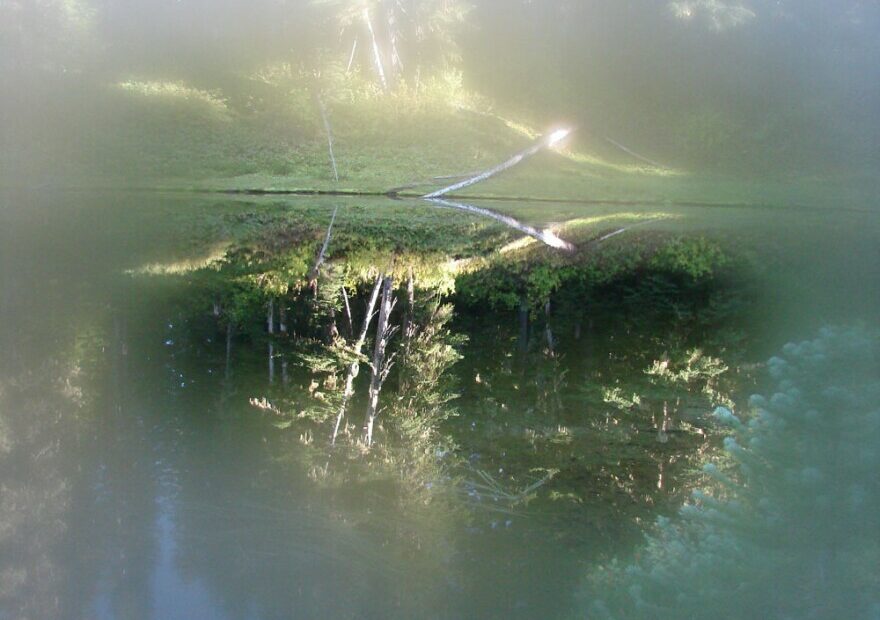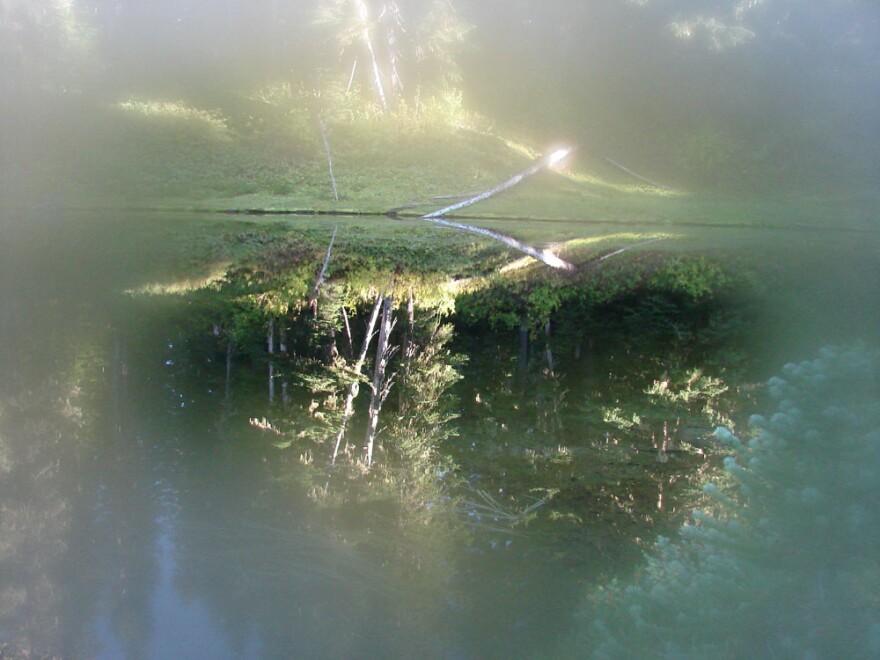
Dozens Of Northwest Places Have A Slur In Their Name. People Are Coming Up With Replacement Names
Listen
(Runtime 4:42)
Read
People with an interest in geography or Pacific Northwest history are coming up with replacement names for dozens of places around the region that currently have a name considered derogatory. The U.S. Secretary of the Interior launched the search for new names by ordering a specific racial slur stricken off the map nationwide as expeditiously as possible.
Kevin Bacher has long enjoyed hiking in Mount Rainier National Park. Many times the Eatonville, Washington, man has passed by Squaw Lake, since it’s right alongside the popular Wonderland Trail.
“The most memorable thing about this particular lake is how mosquito-y it is,” Bacher said with a knowing chuckle.
The small, tree-rimmed lake is now also noteworthy for its name.
“Like a lot of people, I grew up not even thinking about the names of places like this,” Bacher said in an interview. “But as I became aware of the historical context and the derogatory nature of the name, it does make you think maybe the name should be changed at some point. I’m glad it’s happening.”
The alpine pool is among 18 remote lakes, mountains, ridges, creeks, canyons and valleys in Washington state with the word “Squaw” in their name. Oregon has been chipping away at offensive place names for years, but still landed more than 50 on the Interior Department’s list to be changed. Idaho has even more, some 62 instances of the slur on the landscape. Idaho’s list includes the doubly-offensive “Squawtit,” a 9,000-foot peak in the Lost River Range.
The secretarial order affects geographic names on federal, state, tribal and private lands, totalling more than 660 features nationwide that carry what the agency now just calls the “sq___” name.
Bacher joined more than 1,000 other Americans and counting who have responded to the Interior Department’s call for comments and suggestions. The park lake of interest to him is within an expanse of alpine meadows named Indian Henry’s Hunting Ground, after a Native man, Satulick, who hunted in the area in the 1800s.
“It occurred to me because the lake was named for his wives who camped there along the edge of the lake — that’s why the name was given to it originally — that maybe the lake should actually be named for one of his wives,” Bacher said.
“The lake could be renamed ‘Patoomlat Lake,’ or ‘Sally Lake,’ after the native or English name of Satulick’s primary wife,” Bacher wrote in his public comment. “He originally had three, until being informed that this was illegal; he chose Patoomlat as his legal spouse.”
Roughly one-fifth of the comments received by the federal government — and in response to a separate solicitation by the Washington State Department of Natural Resources — objected to the renaming process ordered by the nation’s first Native American Secretary of the Interior, Deb Haaland. Those commenters said the effort was a waste of time, or an ill-considered exercise in “wokeness,” or said the government shouldn’t rewrite history.
Mike Iyall is a former Cowlitz tribal vice-chair who currently sits on Washington state’s geographic names review committee. His take is this might be a chance to replace a demeaning generic place name with the names of original inhabitants.
“It was belittling and derogatory to not give somebody a proper name on their feature,” Iyall said during a recent committee meeting. “If anybody knows who that person might be, that name should be brought forward.”
A Department of the Interior spokesperson said representatives of more than 100 tribes across the nation participated in a series of agency webinars to answer questions and receive tribal input in the renaming process. The Colville Confederated Tribes are engaged on the matter, but the cultural committee chair said through an assistant she was not available for an interview. A Yakama Nation spokesperson did not return a call for comment.
Oregon ahead of the curve vetting replacement names
The Oregon Geographic Names Board already had 12 “sq___” name changes pending on the federal docket when the Interior Secretary created her renaming task force. Oregon board president Bruce Fisher said since those names are already vetted and have local support, they should get priority consideration. For example, Squaw Mountain in southwestern Oregon’s Josephine County would become Kailapa Mountain.
“Kailapa is a Takelma word (the local tribe) which means woman, but in a more respectful way,” Fisher explained.
Nearly all the proposed new names submitted from Oregon have Native origins, including the nomination of Taytáy Creek for a stream in the Umatilla National Forest.
“Taytáy comes from the Umatilla word for many meadows,” Fisher said.
People across Washington state are proposing all sorts of new names to replace the oft-repeated slur. A Mazama man formally nominated Black Canyon Ridge as the new name for a feature on the Chelan and Okanogan county border, picking up the name of a creek below.
A remote stream northwest of Forks could become Cullen Creek in a nod to the vampire family name from the Twilight book and movie series. The Olympic Peninsula natural resource agency worker who proposed the new name noted the popular saga was set in the Forks area and still draws tourists on literary pilgrimages.
A former Davenport, Washington, resident proposed to rename Squaw Canyon in Lincoln County as Tolstoy Canyon in recognition of the close by Tolstoy Farm. Chrys Ostrander described Tolstoy Farm, established in 1963, as “the oldest, still existent, non-religious intentional community in the U.S.” Other area residents quickly chimed in with other suggestions, including Moccasin Canyon or naming the whole watercourse Mill Canyon, which is its name nearby.
Problem solved on its own by vanished island
Along the lower Columbia River, maps show a small island with the problematic name near Ridgefield. David Morgan is — or perhaps we should say WAS — the landowner. He gave surprising news to the Washington Committee on Geographic Names on April 7.
“The island that had been named that has disappeared over time,” Morgan said. “It might be an easier thing just to have it disappear from the map rather than renaming.”
Archived aerial photos show the island eroded, shifted, then eroded some more until it was no longer an island.
“I know that area (of the river) moves around a lot,” the third-generation family farm owner said in a follow-up interview.
A spokesman for the Interior Department said if the agency finds a place no longer exists, it would be removed from consideration for renaming.
Public comment period closes soon, then what?
The public comment period on the derogatory place names push ends soon on April 25. Anyone can comment online and offer a replacement name for a specific feature by visiting regulations.gov, typing “DOI-2022-0001” into the search bar and then clicking on the “comment” button.
After the public comment period closes, an interagency task force will sort the nominations that came in from the public, state agencies, tribes and outside organizations as well as candidate names auto-generated by the U.S. Geological Survey. USGS identified five candidate replacement names for each problematic site by plucking names from nearby features on its digital maps. For instance, if “Castle Creek” was the closest named feature to a place called “Squaw Mesa,” the first proposed name might be “Castle Mesa,” said a Federal Register notice.
By the end of summer, the task force is supposed to forward a list of recommendations for replacement names to the U.S. Board of Geographical Names, which has the final say. The process should wrap up with a list of official new names sometime in the fall, according to a USGS FAQ web post.
If the new name for a landscape feature meets with disfavor from the surrounding population, Oregon’s Fisher said the regular renaming process could potentially start over from the beginning at the local level.
“The replacement names can be replaced again at some later time,” Fisher said in an interview.
When the Interior Department finishes the daunting task of replacing the more than 660 “sq___” place names nationwide, Haaland wants the agency to start another push to change other derogatory or offensive monikers on the landscape. A second secretarial order she signed created a federal advisory committee tasked with soliciting proposals to replace geographic names that demean other racial or ethnic groups.
Some possible landmarks that might come up in this search include Chinaman Hat, a summit in southwest Oregon, Negro Brown Hill and Negro Head Rapids in north Idaho, and Redmans Tooth east of Roseburg, Oregon.
















